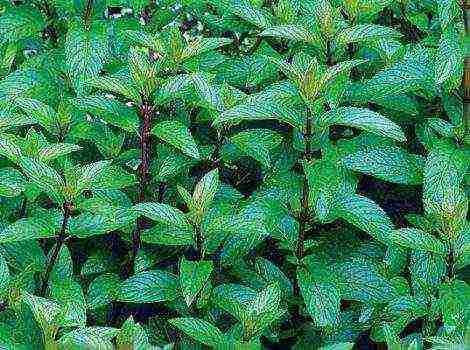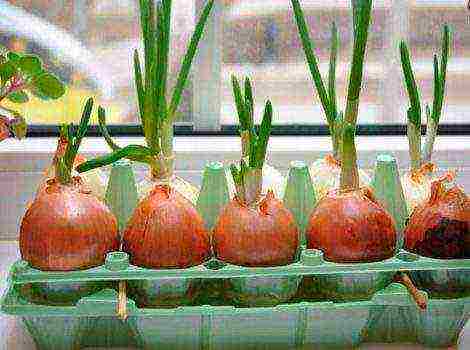Content
This beautiful and tasty mushroom, which is never wormy, is adored by mushroom pickers and gourmets. It's always nice to see the bright red chanterelle hat peeking out of the moss. Chanterelles are dried and pickled, harvested fried and salted. They prepare soups and pies, add to porridge and stuff pancakes with them. But there is no dish tastier than fried chanterelles with potatoes and onions. Scrambled eggs with chanterelles are also a recognized delicacy.
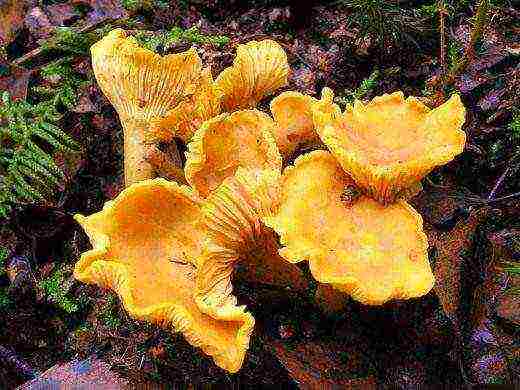 Common chanterelle
Common chanterelle
About the benefits of chanterelles
Chanterelle is rich in vitamins, minerals and amino acids. The bright red carrot color is due to the high content of useful carotene. The mushroom is used in the prevention of various diseases, in the treatment of liver, hepatitis C, eye ailments. The chanterelle helps fight inflammatory processes, inhibits the growth of many pathogens, and increases immunity. A couple of decades ago, it was an ordinary mushroom, widespread in our forests. Today, near large cities, the chanterelle has become a rarity, like other valuable mushrooms, by the way.
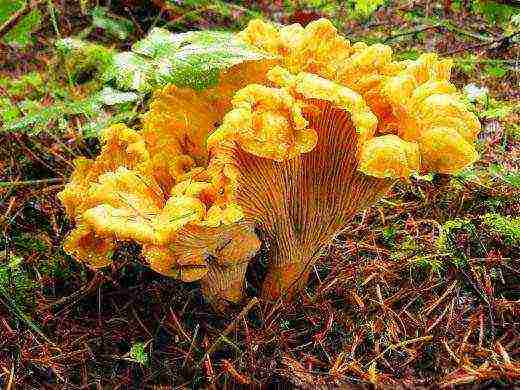
How to grow a chanterelle on the site?
Champignons and oyster mushrooms grown in large mushroom farms have long been familiar. Forest mushrooms are still not so common in industrial production, but skilled amateur mushroom growers successfully grow noble tubular mushrooms on their plots: boletus, boletus, boletus. The chanterelle, whose genus numbers up to sixty species, is an infrequent visitor to the gardens, but if you create the necessary conditions for it, it is possible to get a good harvest from your plot.
 Cinnabar red chanterelle,
Cinnabar red chanterelle,
The chanterelle fungus forms mycorrhiza - the mycelium of the fungus grows into the root system of the tree. Mycorrhiza is a symbiotic formation, the plant supplies the fungus with nutrients, the mycorrhiza supplies minerals to the roots of the partner, improves the supply of moisture. The best partners of the chanterelle are pine and spruce, the mushroom can cooperate with oak, beech and some other types of trees. Attempts to "make friends" the forest mushroom with garden trees are doomed to failure.
So, we know the main condition, without which it is impossible to grow a chanterelle: the mushroom plantation should be located under the partner tree. If there is none, you will have to plant. It is better to choose a young tree in the mushroom forest, immediately with the mycelium. The mycelium is located at a distance of 15-20 cm from the surface, it is advisable not to destroy the fungus root. It is necessary to grab together with the tree a couple of bags of the upper layer of forest soil and coniferous litter. It is better to plant a forest tree with a mushroom root in a semi-shady place on the site. When planting, the mycelium should be in the forest soil, covered with needles on top. The mycelium does not tolerate both drying out and waterlogging, so moderate watering will have to be carried out regularly. There is no need to fertilize the soil: the chanterelle will receive nutrients from the partner's roots.
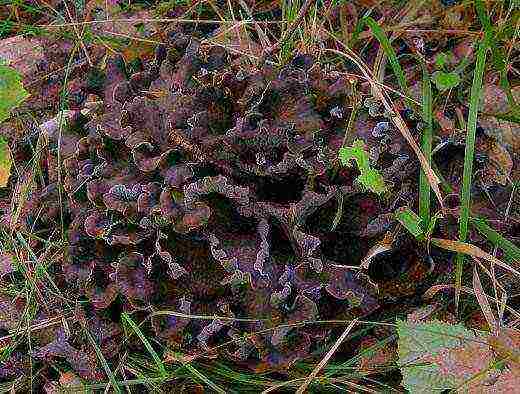 Chanterelle gray
Chanterelle gray
If a pine, spruce, or other forest tree is already growing on the site, chanterelles can be planted to it. Moreover, the spruce can be blue, and the mountain pine, the yield does not depend on the variety and subspecies of the tree. There are two methods: planting mycelium and sowing spores.
When sowing, choose the caps of old, overripe from a gastronomic point of view, mushrooms.Some amateur mushroom growers advise simply scattering the caps under the tree, others recommend soaking them in water, and after a day, having mixed well, pour the planting site with the solution. The main condition is to further maintain a constant humidity level: drying out or waterlogging will destroy the planting material.
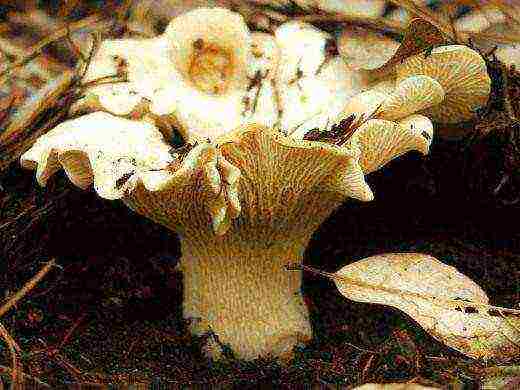 Chanterelle white
Chanterelle white
A more reliable and faster way is to plant mycelium dug out in the forest. Pits are dug under the symbiont tree, the depth is about 20 centimeters, the size in the plan is not important, but usually it is 15x15 cm.The mycelium is placed there together with the forest soil, covered with moss, coniferous or leaf litter on top. The watering regime is the same as for spore planting. Planting times are from June to September. There is one subtlety: the mycelium must be prepared under a tree of the same species, which will serve as a symbiotic partner.
Subject to the above conditions, especially the humidity regime, by the beginning of June next year it will be possible to taste chanterelles from your own garden.
h1Technologies of growing chanterelles at home for beginners "/>
These mushrooms have a high taste and are very beautiful. Their bright yellow "cockerels" are visible from afar, even an inexperienced lover of quiet hunting can find them in the forest. Avid mushroom pickers who want to get more crops are trying to master the cultivation of chanterelles at home.
People have already figured out the cultivation of oyster mushrooms, champignons, shiitake and other mushrooms. But chanterelles cannot be grown in artificially organized conditions. Plants of the mycorrhizal family, to which chanterelles belong, can exist only in close contact with tree roots. They participate in symbiosis - they receive nutrients from the roots, supplying them with moisture.
You can have a mycelium with brightly colored cockerels in your outdoor area. But these fruits cannot be grown in a greenhouse, basement or cellar. Best of all, "cockerels" feel under a pine, oak, spruce, fir and beech. The presence of these trees on the site is the main condition for the cultivation of chanterelles.
Planting material
To grow chanterelle mushrooms, like any other, you need mycelium. You can purchase it in specialized stores, or you can get it yourself.
There are several options for "contaminating" the soil with chanterelle spores:
- The first way is to collect ripe mushrooms in the forest. Soak the hats in a bucket of sweetened water for 10-20 hours. Add sugar to the solution, at the rate of 100 grams per 1 liter of water. After the specified time, the chanterelles must be kneaded with hands in water. Strain the resulting liquid. Do not pour out the solution, it will be needed, as well as the remaining gruel.
- On the site, choose a tree of the same species near which you collected chanterelles. Remove the top layer of earth around it. Disinfect the place under the mycelium with tincture of oak bark. Pour the spore water around the tree. Spread the mushroom porridge on top. Cover with earth. Next, you need to ensure that the place is constantly moderately humid.
- Even dried chanterelles are suitable for obtaining planting material. They should also be soaked for several hours. It is better to use rainwater for these purposes.
You will harvest the first crop of chanterelles only in a year. For the winter, the place for mushrooms should be covered with dry branches or hay. - The second way is to harvest mycelium. In the fall, find a place in the forest where chanterelles grow. Even if the mycelium is not bearing fruit at the moment, the seedlings will be suitable. It is necessary to dig a small area with a shovel. Choose a tree that you have in your yard. In the ground, you will see thin white threads, this is the mycelium of chanterelles. It must be kept until spring. To do this, place the soil with mycelium in bags and put it in a cool place, for example, a cellar. Do not close the bags tightly, you need a constant supply of air.
The temperature must not be allowed to drop more than -2 ° C.In such conditions, the planting material overwinters well, and harmful organisms that could get into the soil from the forest will die. The earth can practically dry out during this time, but the mycelium will be in good condition. When it gets warm, in the spring, lay out the soil with mushroom threads around a certain tree, having previously cleared and disinfected the soil with a decoction of oak bark. Monitor the moisture content of the mycelium and in a year you will see the desired, bright yellow fruits.
Unfortunately, there is no such thing as an intensive breeding method. Growing chanterelles in a greenhouse is impossible, she needs tree roots and natural temperature.
How to breed chanterelles from laboratory mycelium?

If you find the method of self-harvesting mycelium questionable, you can buy it. Today, chanterelle mycelium is available in specialized stores, and you can buy it on the Internet. Just be interested in the seller's reputation so as not to get caught on a low-quality product. The package must be accompanied by instructions that indicate how much mycelium must be applied per square meter of soil.
Growing chanterelles at home requires compliance with the following technology:
- Land must be brought from the forest.
- Choose a tree of an identical species - on the site and in the forest.
- The prepared laboratory mycelium is added to the prepared pits.
- Cover with earth, watered abundantly.
Further care for the mycelium is identical to the first two methods. It is enough to monitor the humidity and provide protection from frost in the cold season, covered with hay, straw or dry branches.
So chanterelle mushrooms are grown at home if there are trees of suitable species in the summer cottage. If there are none, do not be discouraged, you can think of something.
How to breed chanterelles if there are no necessary trees in the yard?

The answer to this question suggests itself. Trees need to be planted! And together with the chanterelles. This is done in the following way. A young oak, pine or alder is found in the forest, around which a family of chanterelles has already "settled". The tree is dug up so as to capture the soil with the mushrooms. The seedling is planted on the site, the moisture of the soil is monitored. In a year or two, you will be able to harvest chanterelles near your own home.
Despite the objective difficulties, growing chanterelles at home is quite possible. But today no one recommends doing this professionally, it is impossible to build a business on chanterelles, due to their dependence on their natural habitat.
Absolutely unusual, yellow-orange chanterelle mushrooms, arouse interest with their positive species and rich taste among gourmets and mushroom growers.
More and more people who are fond of cultivating crops are interested in how to grow chanterelles at home, on their plot or dacha, and whether artificial cultivation of these mushrooms is possible. Due to the structural features of the chanterelle mycelium, breeding them outside of natural conditions is a complex process that requires a lot of effort and attention.
About chanterelle mushrooms
Chanterelle mushroom (Cantharellus) belongs to the mycorrhizal family. This means that its mycelium can only exist in the vicinity of the roots of certain trees. Thin filaments (hyphae) of the mycelium, which are the "body" of the mycelium, are connected to tree roots. This union is by no means parasitic.
The mushroom gives the tree some of the nutrients, and from the roots it receives moisture and some of the elements it needs. This interaction is called symbiosis. Plants do not destroy, but complement each other. The existence of the chanterelle mycelium is impossible without the root system.
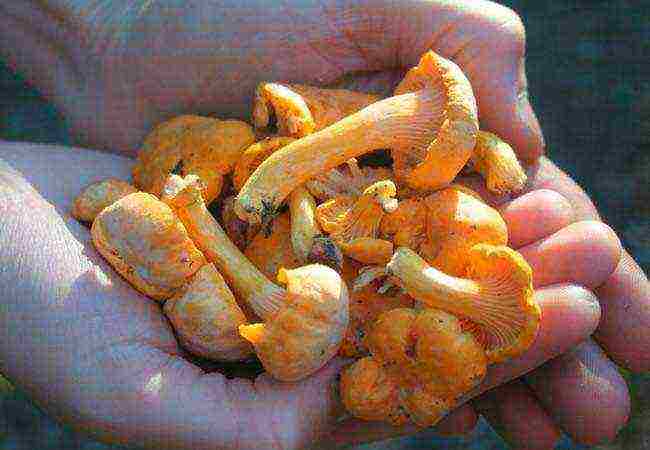 Chanterelles at home
Chanterelles at home
Externally, chanterelle mushrooms have a bright dark yellow or orange cap of a depressed appearance with carved edges, similar to the combs of a rooster. Among the people, the chanterelle is sometimes called "cockerel" precisely because of the structure of the hat. The diameter of the mushroom hat can reach 8-10 cm, the leg length is 5-7 cm.The leg forms a single whole with the mushroom cap and does not have significant differences in color.
Best of all, chanterelles take root with pines, but they can coexist with oak, spruce, beech, fir. The chanterelle can grow in soils that are not particularly rich in nutrients and moisture, because it still takes the lack of elements from the roots.
To date, biologists have not been able to fully cultivate the chanterelle. The mushroom cannot be grown in completely artificial conditions, isolated from nature. Breeding of these myceliums can only be carried out on land plots on which suitable trees grow. No substrate, stumps, bars can become a breeding ground for a plant. "Cockerel" needs a symbiosis with living roots.
How to grow chanterelles at home
You can only grow chanterelles at home if the trees listed above grow on your site. At the same time, keep in mind that if the seed is taken from the mycelium under the spruce, then it must be planted under the spruce. The same applies to the rest of the trees and myceliums, otherwise the chanterelle will not take root. Seedlings can be made from the fruiting bodies of the fungus or take mycelium.
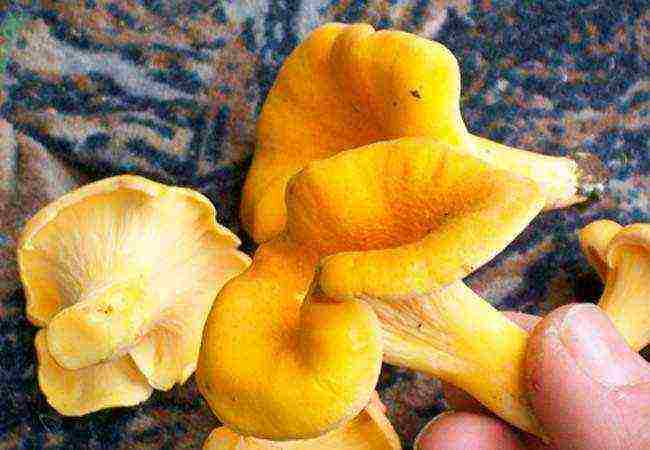 How to grow chanterelles at home
How to grow chanterelles at home
How to make seedlings from spores
Collect some mature large chanterelles in the forest. Rinse the hats, mash them into gruel and soak them in clean, preferably rainwater, for a day. The water should be sweetened, at the rate of 100 grams. sugar per 10 liters.
After a day, strain the water through cheesecloth or a fine sieve. It will be useful to water the land where the mushroom is planned to be planted with this water. The pulp that remains in the gauze (sieve) will serve as a seed for you.
How to plant
Chanterelles are best planted in spring or early summer when the weather is warm.
- Moisten the soil under the tree a few days before planting.
- On the day of planting, prepare 1 liter of saturated oak bark infusion. It is needed to disinfect the soil.
- Dig a small hole under the tree trunk, 50-60 cm in diameter and 20-30 cm deep.
- Pour oak bark over the hole and wait for the liquid to absorb. After about half an hour, put the seed from the mushroom gruel on the bottom of the depression, evenly distributing it throughout the pit.
- Bury a groove, slightly moisten the top of the soil.
Further, make sure that the soil in this place does not dry out. It should be kept hydrated, but not flooded with water. Humidity should be kept within 40%. For the winter, the mycelium should be covered with hay, moss or dry branches. The harvest can be expected next year.
Planting chanterelles from mycelium
Harvesting mycelium is best done in the fall. To get seedlings from the mycelium, find the chanterelle mycelium in the forest and dig a small area of soil under the tree. You will see that the earth is riddled with subtle hyphae. It is not necessary that the mycelium bears fruit at this moment.
 Planting chanterelles from mycelium
Planting chanterelles from mycelium
The mycelium must be kept until spring. It can be placed in bags and kept in a barn, basement, or any other cool non-residential area. The bags cannot be tied tightly, the mycelium must receive oxygen. Don't worry, the hyphae won't die even if the soil dries well. The mycelium can be vital for a year. Exposure is needed to destroy all harmful microorganisms that are in the soil. But mycelium must not be allowed to freeze, the best storage temperature is + 8-2 degrees.
In the spring, prepare the soil in your area in the same way as described above. Lay the soil with mycelium neatly in the dug holes. Cover it with soil, moisturize and care for, maintaining the necessary moisture level. Do not forget that you need to plant mycelium under the same tree species from under which it was taken. Harvest with a favorable outcome will be in a year.
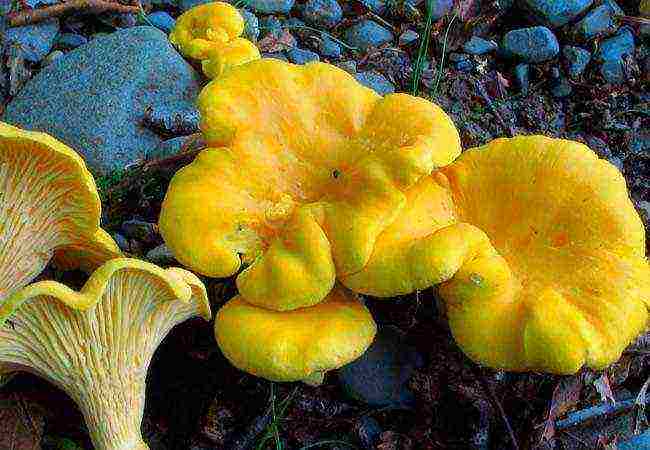 How to grow chanterelles at home
How to grow chanterelles at home
The technology of how to grow chanterelles at home is not so difficult. The point is that it takes a lot of patience to see the first harvest.But he may not ascend, due to the special nature of the chanterelles. These mushrooms have not yet been able to "tame" completely and control the process of their fruiting. Therefore, until now, no one takes up the cultivation of these mushrooms as a business. Growing chanterelles today can only remain an interesting hobby for summer residents and farmers.
Chanterelles rightfully enjoy the well-deserved fame among mushroom pickers. Bright yellow, tasty, healthy, pleasing to the eye. They are great in any dish. Many owners of personal plots are wondering: is it possible to grow chanterelles in the country or in the garden? Those who have tried to do this claim: nothing is impossible. You just need to know the tricks to help plant and grow an unusual country "resident".
Features of the growth of chanterelles
In the forest, the mushroom grows, forming an advantageous neighborhood with the roots of certain trees. The mycelium grows inside the roots, saturating the tree with useful components, and in return receives water, nutrients and elements necessary for growth. Therefore, the cultivation of chanterelles is possible only if there are overgrown rhizomes of trees on the site. You can "add" mycelium to any coniferous tree, but best of all it is adjacent to spruce, pine. A good harvest of chanterelles is obtained under oak trees.
If there are coniferous trees on the site, chanterelles can be bred independently
Advice. If the planting material was collected under a spruce, it is also necessary to plant it on the site under a spruce. Do the same with mycelium collected under other trees. So the mycelium will be better able to take root and give a good harvest. "
Do not try to "make friends" chanterelles with fruit trees, this venture is doomed to failure. The mycelium needs microelements for growth, which it receives only from the roots of the familiar partner tree.
What is needed for landing
It is best to plant chanterelles on the site at the beginning of summer, when the weather is warm. The main thing that is necessary for the growth of mushrooms is a coniferous tree or an oak tree. You shouldn't wait for the harvest without them. Both forest species of conifers and decorative spruces are suitable for rooting mycelium.
You can bring a young Christmas tree dug out along with the roots and mycelium to the site from the forest. Such a forest beauty will become not only a decoration of the site. It guarantees good survival rate and future high yield.
On the plot, chanterelles are planted in early summer
Choose a tree in an area that has access to sunlight. Since the mycelium of chanterelles grows quite widely, provide free space around the landing site.
In addition to the donor tree, you will also need:
- uterine material: mycelium, caps or mycelium solution;
- sod from under the tree, where the mycelium was dug out or the caps were collected;
- covering material: forest moss, leaves, needles, blades of grass;
- shovel;
- loda for watering.
For beginners, the question often arises: is it possible to plant chanterelles in a greenhouse? It is possible, but it is useless. For proper growth, they need an ally tree. If it is not there, the mycelium will not be able to develop. For the growth of mushrooms, special devices are not needed: greenhouses, hotbeds, a special substrate, dry stumps. The main thing is to provide the mycelium with conditions similar to natural ones, then the harvest will not be long in coming.
It is better to breed chanterelles without a greenhouse, in conditions close to natural
How to plant correctly
Moisten the soil liberally a few days before planting. Spill it well with a strong infusion of oak bark. It disinfects the soil, creating a favorable microclimate for the mycelium.
There are two main types of planting of chanterelles: mycelium or spores.
- In the first case, you will need mycelium collected in the forest. Dig the mycelium together with pieces of soil and transplant it under a tree on the site. Then cover it on top with moss, fallen needles or leaves. It is best to cover the planting site with leaves and needles collected from the forest.If the mycelium is harvested in the fall, it must be stored until spring by placing it in a cool, well-ventilated area.
- When planting with spores, you will need a specially prepared solution. To do this, collect overgrown mushroom caps that are not suitable for consumption. Wash them, mash, then soak in lightly sweetened clean water. Strain the solution after 24 hours. The remaining pulp will make a good planting material.
Chanterelle mycelium can be found independently or purchased ready-made
Some connoisseurs plant chanterelles in an unusual way, simply by scattering broken caps of old mushrooms under a tree. Before planting, remove the top of the soil, slightly exposing the roots. Water the unfolded caps abundantly, cover with forest moss and needles and leave for germination.
Watering features
Chanterelles love moist soil. Water the places where the planting material was planted lightly, and spill the space between them, on the contrary, with plenty of water. Water the mycelium once every 7-10 days in the absence of rain. Reduce watering in wet weather.
Advice. The stores sell ready-made mycelium for planting various mushrooms. As practice has shown, the ready-made solution gives a lower yield compared to natural sowing material. Use a commercial solution for additional nutrition of the mycelium by watering the soil with it.
When planting in any way, after 2-3 weeks, gently lift the top cover layer. If everything is in order with the mycelium, you will see purple threads with a greenish tinge stretching through the soil. Delicious mushrooms will grow from this growing mycelium.
Chanterelles love moist soil
When to wait for the harvest
The first chanterelles will appear on the site one year after planting. Harvest guarantee - proper care. To keep the mycelium overwintered, cover it with hay, leaves or branches. In the spring, when the weather is warm, remove everything from under the tree to ensure that the mushrooms can grow.
Do not dig soil around the tree, keep the mycelium at rest. It is wonderful if grass brought from the forest sprouts on the mycelium. Please be patient, because the reward for your efforts is delicious chanterelles grown on your own plot.
Collecting chanterelles - video

